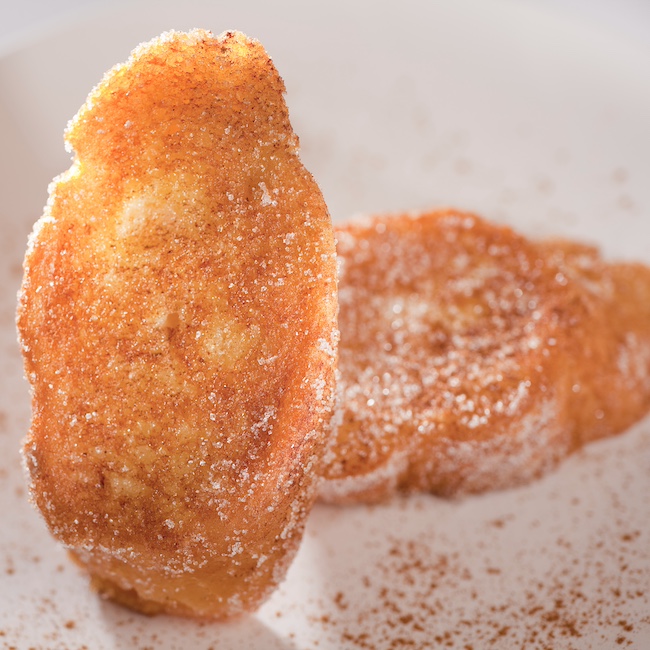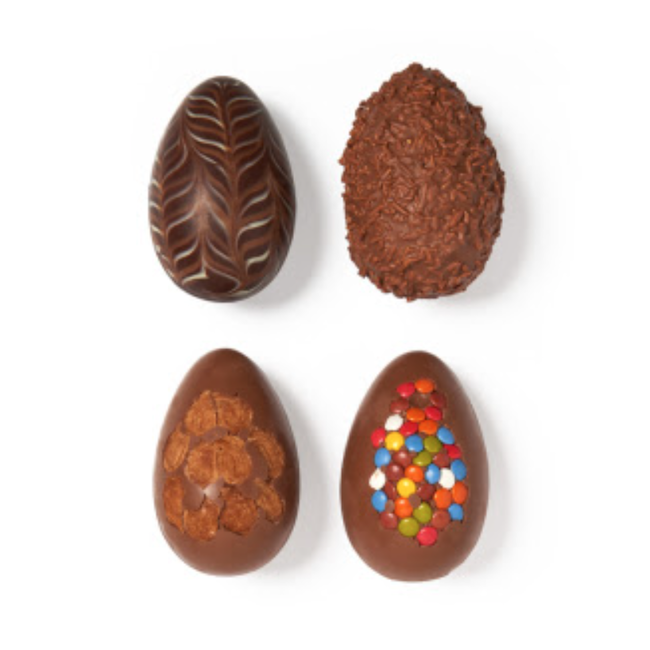.png.transform/rendition-xs/image_image%20(1).png)
Sweet Traditions: Spanish Spring Desserts That Tell a Story
From golden torrijas to anise-scented pestiños and festive monas, these traditional treats bring generations together through recipes passed down and flavors that capture the essence of spring
Spring in Spain is not only a time of blooming, but also a time to treat yourself. Home kitchens, restaurants, and bakeries come alive with sweet delights during what is truly the high season for desserts. It all begins at Easter, the time of year when most of these sweets originate. Once you discover these specialties, it’s impossible not to fall in love with them.

Torrijas: Golden Bites of History
Simplicity at its finest, torrijas are slices of stale bread soaked in milk or wine, then dipped in egg and fried to golden perfection. Sweetened with honey or sugar and dusted with cinnamon, they have a soft, custard-like inside and a crisp edge.
These humble delights date back to 15th-century convent kitchens, created as a way to use up leftover bread during Lent, a time when meat was scarce. The popularity of torrijas has surged in recent years, with many restaurants now offering them all year round.

Monas de Pascua: The Sweet Gift That Ends Lent
A beloved Easter tradition in Catalonia and Valencia, monas de Pascua were once gifts from godparents to godchildren, marking the joyful end of Lent. These festive pastries range from simple brioche-style buns with hard-boiled eggs to elaborate chocolate sculptures.
Today’s versions blend both—classic and modern—thanks to master pastry chefs like Christian Escribà and Oriol Balaguer, who turn monas into chocolate masterpieces fit for a (sweet) museum. A true temptations not to be enjoyed only during Easter but all year long.

Pestiños: A Crispy Whisper from the Past
Deep-fried and glazed with honey or sugar, pestiños are small pastries made with flour, olive oil, sesame seeds, and often infused with orange zest or anise. With roots in Andalusia and Arabic cuisine, their crisp exterior and melt-in-your-mouth crumb carry warm notes of spice and citrus.
Sticky, sweet, and nostalgic, pestiños are a communal treat—made in large batches, shared with family and neighbors.

Roscos Fritos: Doughnuts with a Spanish Soul
Shaped like rings and flavored with anise liqueur or seeds, roscos fritos are Easter’s answer to doughnuts. They’re fluffy with a chewy bite and a flavor that dances between sweetness and herbal warmth. Often coated in sugar, they’re especially popular in central and southern Spain during Holy Week.
Eater Sweets in Restaurants from Spain
These traditional Easter treats are more than desserts—they’re edible heritage. Each bite tells a story of regional pride, faith, and the joy of flavors passed down through generations.
Some of these specialties can even be found outside Spain, in restaurants with the seal Restaurants from Spain, certified as authentic Spanish cuisine. Want a taste of Semana Santa abroad? Try torrijas at Socarrat in New York, Barrafina in London, or Casa Pablo in Warsaw—the true taste of Spanish Easter.
